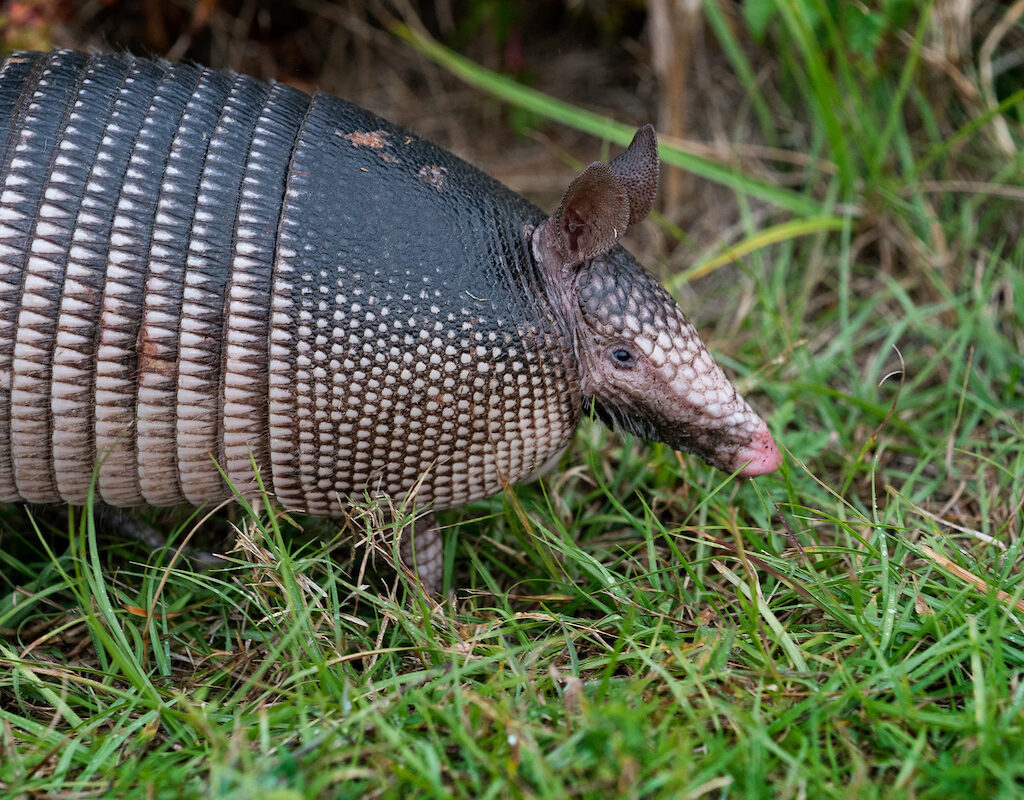Wildlife
We offer a wide range of resources, publications and events to provide landowners, conservationists and hunters an array of information regarding wildlife, including white-tailed deer, dove, quail, waterfowl and turkeys as well as non-native species like feral hogs as well as habitat and population management.
Related Department: Animal Science, Rangeland, Wildlife and Fisheries Management

Feral Hog Management

Learn About
Wildlife
Publications
Programs
All Resources on Wildlife
- Publication
This publication discusses the distribution of feral hogs as well as their habitats, food habits, and reproduction. Feral hogs can damage crops and kill lambs and kid goats. Methods of control are also explained. (4 pages)
- Publication
Many kinds of snakes live in Texas, but only a few are poisonous. This leaflet focuses on the control of poisonous snakes by altering their habitats, fencing, trapping, poisoning and shooting. (4 pages)
- Publication
Most species of bats found in Texas are of some economic importance and are beneficial because they eat insects. This publication discusses the characteristics and control of bats. Some safety considerations for handling bats are explained. (4 pages)
- Publication
In urban areas, tree squirrels can become pests when they eat pecans, berries, bird seed or vegetables from home gardens, or when they nest in attics. This leaflet discusses control of squirrels by fencing, trapping, poisoning and shooting. (4 pages)
- Publication
Wildlife Services, part of the Texas AgriLife Extension Service, helps the public manage the problems sometimes caused by wildlife. Its objectives are to protect wildlife, crops, livestock, property and human health by controlling wildlife when necessary. (2 pages)
- Publication
House rats and mice eat and contaminate human and animal food, and they damage and destroy property. This leaflet explains how to identify rats and mice by their droppings, runways, food crumbs and noises. Various control methods are discussed. (4 pages)
- Publication
Snares are traps that can be used to capture coyotes. The habits of coyotes are discussed in this publication, as well as what equipment is needed for snaring, where to locate snares, and how to set and check them. Dog and coyote tracks are compared. (4 pages)
- Publication
Nutria are large, semi-aquatic rodents resembling beavers or muskrats. They eat desirable vegetation, girdle trees, and burrow into banks and dams. The biological, reproductive, and behavioral characteristics of nutria are listed, as well as control methods. (4 pages)
- Publication
Excessive numbers of pigeons in cities, suburbs, or parks can create a nuisance and a health threat. Control methods include roost elimination, noise-making devices, traps, poisons, and shooting. (2 pages)
- Publication
This publication discusses rabies, a diseases that skunks can transmit, and the damage that skunks can cause.
